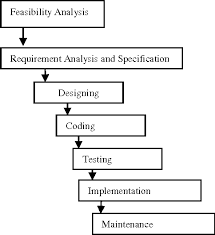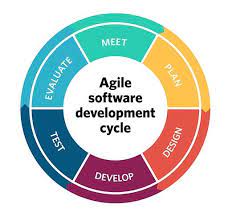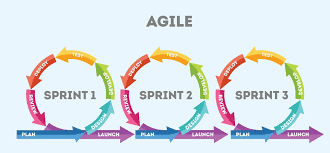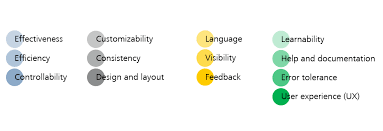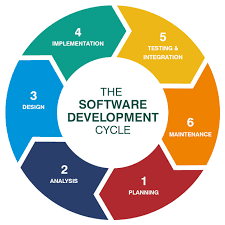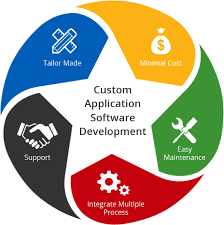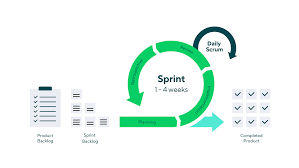Exploring the Impact of Open Source Software Development
The Power of Open Source Software Development
Open source software development has revolutionized the way we create and use technology. Unlike proprietary software, open source software is built collaboratively by a community of developers who openly share their code and contribute to its improvement.
One of the key benefits of open source software is its transparency. Anyone can access the source code, modify it, and distribute it freely. This fosters innovation and allows for rapid development cycles as developers around the world can collectively work on enhancing the software.
Moreover, open source software promotes inclusivity and diversity in the tech industry. Developers from different backgrounds and skill levels can participate in projects, learn from each other, and build a more inclusive community.
Key Principles of Open Source Software Development:
- Collaboration: Developers work together to create and improve software.
- Transparency: The source code is accessible to all, promoting trust and accountability.
- Innovation: Rapid iteration and feedback lead to innovative solutions.
- Inclusivity: Open source projects welcome contributions from diverse communities.
- Community: A sense of belonging and shared purpose drives open source development.
In recent years, many successful projects have emerged from the open source community, including popular web browsers like Mozilla Firefox, operating systems like Linux, and programming languages like Python. These projects have not only gained widespread adoption but have also influenced proprietary software development practices.
As we look to the future of technology, open source software development continues to play a crucial role in driving innovation, collaboration, and accessibility in the digital landscape. By embracing the principles of openness and community-driven development, we can create a more sustainable and inclusive tech ecosystem for generations to come.
Understanding Open Source Software Development: Key FAQs
- What is meant by open source development?
- What are examples of open source software?
- What are open source development tools?
- How is open source software developed?
- How do I become an open source software developer?
- Does open source software have a developer?
- What software is built on open source?
What is meant by open source development?
Open source development refers to the collaborative process of creating software where the source code is made freely available to the public. In open source development, programmers from around the world can view, modify, and distribute the code, fostering a community-driven approach to software creation. This model promotes transparency, innovation, and inclusivity by allowing developers of varying backgrounds to contribute to projects and improve the software collectively. Open source development has revolutionized the tech industry by democratizing access to technology and encouraging a culture of sharing and collaboration among developers.
What are examples of open source software?
Open source software encompasses a wide range of applications across various domains. Some prominent examples of open source software include the Linux operating system, which powers a significant portion of servers and embedded devices worldwide. Additionally, popular web browsers like Mozilla Firefox and Chromium are open source projects that prioritize user privacy and customization. Development tools such as the Apache web server, MySQL database management system, and the programming language Python are also well-known examples of open source software that have gained widespread adoption in the tech industry. These examples highlight the diversity and impact of open source software in enabling innovation and collaboration within the global developer community.
What are open source development tools?
Open source development tools are software applications specifically designed to support and streamline the process of creating open source projects. These tools encompass a wide range of functionalities, including code editors, version control systems, build automation tools, testing frameworks, and project management platforms. By utilizing open source development tools, developers can collaborate more efficiently, track changes in the codebase, automate repetitive tasks, ensure code quality through testing, and manage project timelines effectively. These tools not only enhance productivity but also promote transparency and accessibility in the development process by enabling contributors to work together seamlessly on open source projects.
How is open source software developed?
Open source software development follows a collaborative and transparent process where developers from around the world contribute to creating and improving software. Typically, an open source project starts with an idea or a need identified by an individual or a group of developers. The source code is made available to the public, allowing anyone to view, modify, and enhance it. Developers can collaborate through online platforms like GitHub, where they can submit code changes, report issues, and discuss improvements with the community. This iterative process of feedback, contribution, and review results in the continuous development of open source software that is accessible to all and benefits from diverse perspectives and expertise.
How do I become an open source software developer?
To become an open source software developer, one can start by selecting a project that aligns with their interests and skills. Engaging with the open source community through forums, mailing lists, and code repositories can provide valuable insights and networking opportunities. Contributing to projects by fixing bugs, adding new features, or improving documentation is a great way to gain experience and build a reputation within the community. Continuous learning and collaboration with other developers are key aspects of becoming a successful open source software developer.
Does open source software have a developer?
In the realm of open source software development, the question of whether open source software has a developer is a common inquiry. Unlike proprietary software where a single entity typically owns and controls the development process, open source software projects often have multiple developers contributing to the codebase. These developers can come from diverse backgrounds and may collaborate on the project voluntarily or as part of a community effort. The decentralized nature of open source development allows for greater innovation, transparency, and inclusivity as developers work together to enhance and maintain the software for the benefit of all users.
What software is built on open source?
Many popular software applications are built on open source technologies. Examples include web browsers like Mozilla Firefox and Google Chrome, operating systems such as Linux distributions like Ubuntu and Fedora, content management systems like WordPress and Joomla, programming languages like Python and PHP, and development tools like Git and Apache. These software products leverage the collaborative efforts of the open source community to deliver reliable, secure, and innovative solutions to users worldwide. By utilizing open source components, developers can benefit from a wealth of resources and expertise while contributing to the advancement of technology in a transparent and inclusive manner.



